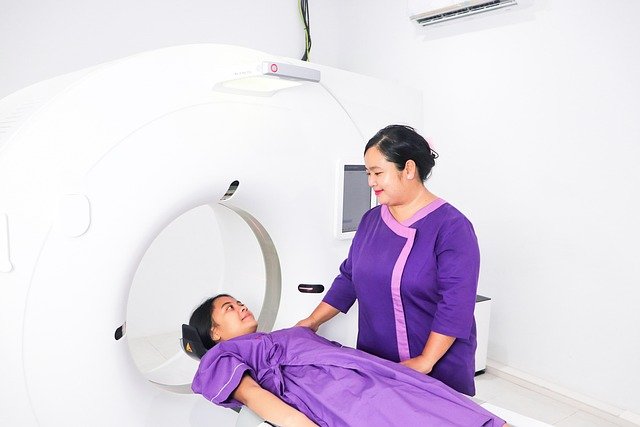Start Your Healthcare Career: Medical Assistant Training
Medical assistant training provides a fast, practical path into healthcare by teaching clinical procedures, office systems, and patient interaction skills—often with hands-on externships and certification prep. Whether you choose a short certificate or a two-year associate degree, this training builds employable skills for clinics, hospitals, and specialty practices while supporting long-term career growth in allied health.

Start Your Healthcare Career: Medical Assistant Training
Medical assistants bridge patient care and clinic operations, performing both clinical tasks and administrative duties that keep healthcare facilities running. Training programs teach practical skills—taking vital signs, preparing patients for exams, drawing basic lab specimens, performing phlebotomy and EKGs, managing electronic health records, and assisting with injections—alongside front-desk responsibilities like scheduling, billing, and recordkeeping. With steady demand for healthcare services, this role offers meaningful daily work, stable job prospects, and clear pathways for advancement.
Why pursue medical assistant training?
Programs are designed to build a balanced skill set employers seek. Students learn hands-on clinical techniques and the administrative workflows that ensure efficient patient care. Beyond technical abilities, medical assisting offers frequent patient contact and opportunities to support clinical teams directly, making it a satisfying option for people drawn to practical, service-oriented roles. Predictable shifts, a variety of workplace settings, and the chance to impact patients’ experiences contribute to its appeal as a sustainable career.
Program lengths, formats, and practicum experience
Training timelines vary by credential. Many certificate or diploma tracks aim for quick entry into the workforce and can be finished in roughly 9–12 months. Associate degree programs typically take about two years and include general education courses that may ease transfer into further study later on. Accelerated options are available for those who want to complete training sooner, while part-time, evening, or hybrid online formats help students balance school with work or family life. Most reputable programs include a supervised externship or clinical practicum to give trainees real-world exposure in a medical setting before they graduate.
Typical duties and work environments
Graduates find roles in primary care offices, specialty clinics (pediatrics, cardiology, OB/GYN), outpatient surgical centers, urgent care facilities, and hospitals. Some choose to focus on clinical duties—drawing labs, assisting with procedures, taking EKGs—while others concentrate on administrative work like billing, coding, scheduling, and practice management. The job often blends both areas, offering a varied day and the chance to develop transferable skills valuable across many healthcare settings.
| Experience Level | Estimated Annual Salary Range |
|---|---|
| Entry-Level | $28,000 - $32,000 |
| Mid-Career | $33,000 - $40,000 |
| Experienced | $41,000 - $50,000+ |
Prices, rates, or cost estimates mentioned in this article are based on the latest available information but may change over time. Independent research is advised before making financial decisions.
Earnings and financial outlook
Compensation depends on location, employer type, credentials, and experience. Recent U.S. data place the median annual wage near $35,850, with higher earners surpassing $50,000. Entry-level positions typically start at lower pay bands, but wages rise with experience, specialty training, and additional certifications that expand responsibilities or marketability.
How to pick the right training program
Choosing a program is a key step. Consider accreditation—programs recognized by a credible agency are often preferred by employers and ensure quality instruction. Look for a curriculum that balances clinical procedures (phlebotomy, injections, EKGs) with administrative training (medical records, billing and coding, appointment systems, EHR software). Programs that prepare students for national certification exams, such as the Certified Medical Assistant (CMA) or Registered Medical Assistant (RMA), can improve job prospects. Clinical placements and established relationships between schools and local medical practices help graduates transition to employment. Also evaluate flexibility—part-time, evening, or online options—and student support services like career counseling, job placement assistance, and financial aid.
Visit campuses when possible, talk with admissions counselors, and request to speak with current students or alumni to assess outcomes, workload, and job placement rates.
Advancing beyond initial credentials
Medical assistants can grow their careers through continuing education, specialty certifications in areas like phlebotomy, EKG, or medical billing and coding, or by returning to school for an associate or bachelor’s degree in nursing, health administration, or related fields. On-the-job experience may lead to supervisory roles or office management positions. For many, the medical assistant credential is a stepping stone to higher-paying, more advanced clinical or administrative careers.
Final thoughts
Training as a medical assistant is a practical, flexible way to enter healthcare with hands-on skills and broad workplace options. Whether you prefer a fast certificate program or a two-year associate degree with general education credits, many programs include externships and certification preparation to help you become job-ready. The role combines patient-facing care with administrative responsibilities, offering a varied workday and transferable competencies that open doors across the healthcare sector.
This article is for informational purposes only and should not be considered medical advice. Please consult a qualified healthcare professional for personalized guidance and treatment.






